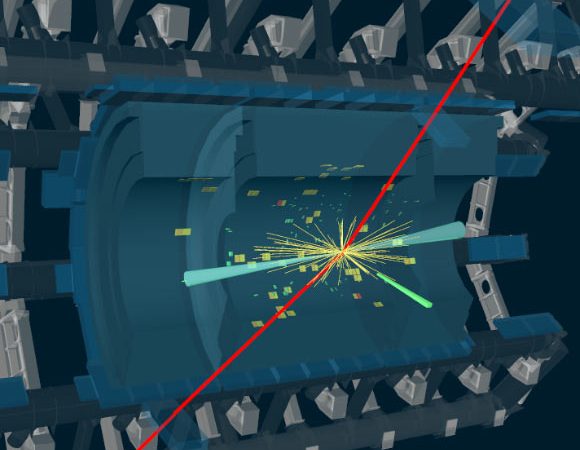Physicists from CERN’s ATLAS (A Toroidal LHC ApparatuS) and CMS (Compact-Muon-Solenoid) collaborations presented their latest results at the 2020 Large Hadron Collider Physics Conference.
Source: Sci News
CERN’s ATLAS and CMS detectors can never see a Higgs boson directly: an ephemeral particle, it decays into lighter particles almost immediately after being produced in proton-proton collisions, and the lighter particles leave telltale signatures in the detectors.
However, similar signatures may be produced by other Standard-Model processes. Physicists must therefore first identify the individual pieces that match this signature and then build up enough statistical evidence to confirm that the collisions had indeed produced Higgs bosons.
When it was discovered in 2012, the Higgs boson was observed mainly in transformations into pairs of Z bosons and pairs of photons.
These decay channels have relatively clean signatures making them more easily detectable, and they have been observed at CERN’s Large Hadron Collider.
Other transformations are predicted to occur only very rarely, or to have a less clear signature, and are therefore challenging to spot.
Physicists from the ATLAS Collaboration presented the latest results of their searches for one such rare process, in which a Higgs boson transforms into a Z boson and a photon (γ).
The Z thus produced, itself being unstable, transforms into pairs of leptons, either electrons or muons, leaving a signature of two leptons and a photon in the detector.
Given the low probability of observing a Higgs transformation to Zγ with the data volume analysed, ATLAS was able to rule out the possibility that more than 0.55% of Higgs bosons produced in the Large Hadron Collider would transform into Zγ.
“With this analysis, we can show that our experimental sensitivity for this signature has now reached close to the Standard Model’s prediction,” said Dr. Karl Jakobs, spokesperson of the ATLAS Collaboration.
The extracted best value for the H→Zγ signal strength, defined as the ratio of the observed to the predicted Standard-Model signal yield, is found to be 2.0+1.0−0.9.
Collision event recorded by CMS. Image credit: CERN.
Physicists from the CMS Collaboration presented the results of the first search for Higgs transformations also involving a Z boson but accompanied by a ρ (rho) or φ (phi) meson.
The Z boson once again transforms into pairs of leptons, while the second particle transforms into pairs of pions (ππ) in the case of the ρ and into pairs of kaons (KK) in the case of the φ.
“These transformations are extremely rare and are not expected to be observed at the Large Hadron Collider unless physics from beyond the Standard Model is involved,” said Dr. Roberto Carlin, spokesperson of the CMS Collaboration.
The new data allowed the researchers to rule out that more than approximately 1.9% of Higgs bosons could transform into Zρ and more than 0.6% could transform into Zφ.
While these limits are much greater than the predictions from the Standard Model, they demonstrate the ability of the detectors to make inroads in the search for physics beyond the Standard Model.
Source: Sci News

































Leave a Comment
You must be logged in to post a comment.